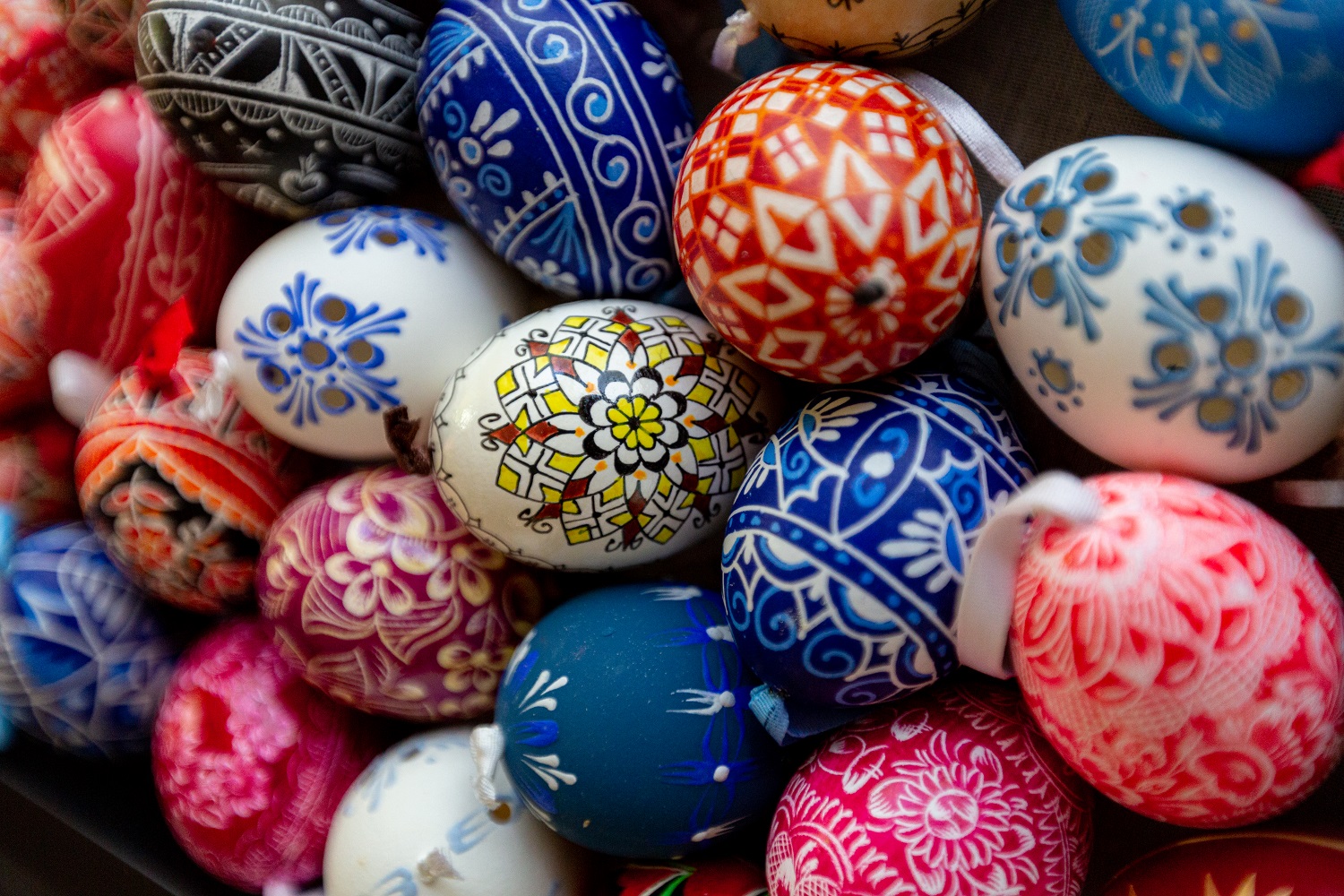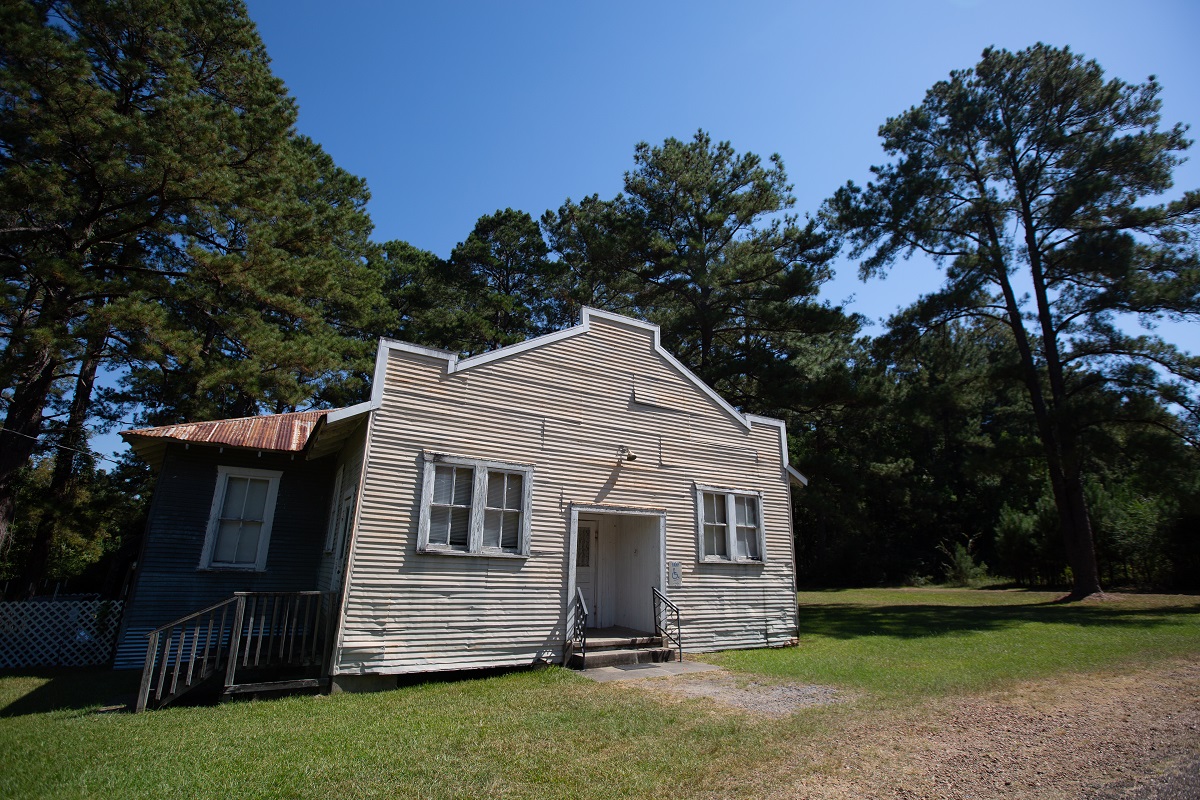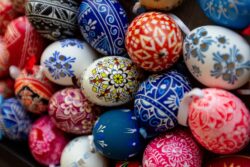Spring 2023
Who Will Pick Up the Czech?
Libuse keeps central European traditions alive in central Louisiana
Published: February 28, 2023
Last Updated: June 1, 2023

Photo by Lucie Monk Carter
An assortment of kraslice.
The Holcombes are not Czech themselves, but came to be involved with the local Czech heritage festival via folk dance. The couple had met through this hobby while David was studying medicine in Nicole’s native Belgium. In 1986, not long after they moved to Alexandria, David heard from a colleague at his private practice that the area’s newly formed Czech heritage group would be learning folk dances together.
“So we went and learned the beseda; it’s a suite of dances. There’s a bunch of them. There’s the Bohemian beseda, the Slovak beseda, the Moravian beseda. This was the Bohemian beseda,” said David, who turned around and taught the group the twenty folk dances he’d learned from famed Czech choreographer František Bonuš.
“These folk dances are a learned and specific way of doing things,” said Louisiana Czech Heritage Association cofounder Frances Kramel Hazmark. “Before this, once a month on Saturday night, we’d hold polka dances to raise money for whatever. It usually amounted to two or three dollars.” The dance suites are among the traditions revived and in some instances created, as the group has sought to preserve the Louisiana communities of Libuse and Kolin, which have dwindled to just one weather-beaten dance hall, whose path to repairs and preservation is complicated by the fact that it has no single owner but instead is owned by the collective “Czech community of Libuse.”
Libuse and Kolin were established in 1912 by the Bohemian Colonization Club, which developed other distinctly Czech agricultural communities across the country, including in Nebraska and Oregon. The group’s founder, Hospodář magazine publisher Jan Rosický, advocated against Czech immigrants assimilating into American culture and leaving behind agrarian life for city jobs.
Hazmark’s father’s family came to Libuse from Kansas, while her mother’s family, the Prochaskas, relocated from the populous Czech community in Cedar Rapids, Iowa, for the promise of their own land in Louisiana. (The National Czech and Slovak Museum and Library is located in Cedar Rapids today.) But Libuse proved to be an inopportune locale for an agrarian community. The cheap land secured for their farming settlements by the Bohemian Colonization Club was, in fact, studded with stumps, a parting note from the defunct sawmills. “By the time the people arrived, the grass had grown up and was hiding all those stumps. You couldn’t see them,” said Hazmark, a Libuse native.
Teaching the children English was a higher priority than communicating in Czech, said Hazmark. Her maternal grandfather told his children, “You’re in America—learn the language.” There were rural schools, including in Liberty, in Kolin, and in Komensky, that provided Czech language instruction, but all had shuttered by 1930 as part of an effort to consolidate the local education program.
Going into town proved difficult, especially if your transportation was a cart animal that had labored all week and needed to rest on weekends, and at any rate there was little to do when you got there. “Libuse never developed into anything more than a grocery store, a service station, a hardware store, a post office, and one or two other buildings. That was about the limit. Kolin was the same. It never became a village or town like they hoped,” said Hazmark.

The old dance hall. Photo by Lucie Monk Carter.
By the early 1980s, Hazmark could tell the community would be relegated to last names and a common distant past if she didn’t intervene. With Betty Jean Baker, Bobbie Sartori, and Rose Walker (who wrote her thesis at Northwestern State University on the rural schools of Libuse and Kolin), Hazmark formed the Louisiana Czech Heritage Association, with an annual festival held each March. A singing group, the Czech Mates, soon followed, and with David and Nicole’s help, the Czech community learned to dance. For a 1993 performance of Bedřich Smetana’s Czech opera The Bartered Bride at Louisiana College, the Czech community folk dancers were asked to perform the choreography. “We were so good!” laughed Nicole. “Because the teacher who asked us, from Louisiana College, she was very strict. So when she’d come to rehearsal, she’d say, ‘Don’t chew. Smile. Don’t talk when you are dancing. Hold yourselves up straight.’ Otherwise we are pretty casual.”
When the Soviet Union dissolved, relationships were rejuvenated with family branches that had remained overseas, and doors opened to new visitors, including the dance ensemble from Zlín. Hazmark wrote a grant in 2006 that brought František Bonuš’s daughter-in-law Jitka to area schools to teach dance and speak on Czech culture. Monthly, Hazmark mails out a newsletter with Czech language, history, myths, and recipes.
Nicole has learned the Eastern European art of egg dying, called pysanky in the Ukrainian tradition and kraslice in the Czech. The eggs are dyed in successively darker colors, with a wax coating applied between each dye stage to preserve patterns. For twenty-one years, until the pandemic forced a hiatus, she’d teach a group to make the eggs in the weeks ahead of Easter. (Selling the eggs at the festival, for around ten dollars each, raises far more money than the monthly polka dances ever did.)
“Like the folk dances, it was reintroduction to a receptive community,” said David. “I gave a talk at Northwestern State University once about kraslice and pysanky in central Louisiana. Afterwards, I asked the people there, who were all folklorists, ‘Is this just fake because it’s been brought in after?’ They said, ‘Oh no, anything the community accepts as folklore is their folklore.’”
Lucie Monk Carter is a writer and photographer in Baton Rouge.
